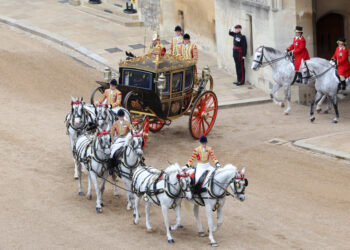 Minabai Seibofa is an International Business Protocol and Executive Protection Professional, with a decade experience in providing protocol management services. He is the Founder and Chief of Protocol, ShieldField Protocol Consultants Ltd, a Protocol, and Executive Protection consulting firm. In his next article published by WPM, he explains the significance of flag protocol.
Minabai Seibofa is an International Business Protocol and Executive Protection Professional, with a decade experience in providing protocol management services. He is the Founder and Chief of Protocol, ShieldField Protocol Consultants Ltd, a Protocol, and Executive Protection consulting firm. In his next article published by WPM, he explains the significance of flag protocol.
Flags are more than mere pieces of cloth. They are powerful symbols that convey a nation’s identity, values, and aspirations. In international relations practice, flag protocol holds a special place, acting as both an art form and a bridge for cultural sensitivity. However, achieving the delicate balance between artistic expression and cultural respect in international flag protocol is a challenge that requires careful consideration.
Understanding the Significance
First, let’s grasp the significance of flags in international relations. Flags serve as visual ambassadors, representing a nation’s history, values, and sovereignty. They are a source of pride and unity for citizens and a means of identification for foreign dignitaries. When we delve into international flag protocol, we are essentially navigating a complex landscape where diplomacy, symbolism, and aesthetics converge.
Challenges in International Flag Protocol
One significant challenge in international flag protocol is ensuring that the display and use of flags respect the cultural and historical sensitivities of all nations involved. What might be seen as a well-intentioned gesture by one country can be perceived as a grave offense by another. Therefore, it’s imperative to research and understand the nuances of each nation’s flag and its symbolism before any international event.
Another challenge is achieving the right balance between artistic creativity and cultural sensitivity. Flag displays at international events are often elaborate and artistic, designed to showcase the host country’s creativity and identity. However, in the pursuit of artistic expression, it’s easy to inadvertently disrespect or misrepresent another nation’s flag.
A typical example is the case of Mowalola Ogunlesi, the designer of the Mowalola ready-to-wear label, when she unveiled the brand’s Spring 2024 collection during London Fashion Week on 16th September 2023, sparking significant controversy due to one particular design.
Among the collection were several miniskirts featuring the designs of various international flags, including those of Japan, the United Kingdom, and one that drew significant attention — Saudi Arabia. What set the Saudi Arabian flag apart was that it bore the Islamic Shahada, a sacred text of the Muslim faith that translates to “There is no god but God; Muhammad is the Messenger of God” in English. Because of the sanctity of this phrase, printing it on a flag and using it in clothing was viewed as a blasphemous act. She eventually apologized in a statement and took out the particular miniskirt in the 2024 collection after receiving a lot of backlash from those who were offended.
Achieving a harmonious blend of artistic flair while maintaining cultural respect requires meticulous planning and execution.
Best Practices and Solutions
To address these challenges, several best practices can be implemented in international flag protocol:
Research and Education: Diplomats and event organizers should invest time in researching the flags of participating nations. Understanding the historical and cultural significance of each flag is crucial to avoid inadvertent offenses.
Flag Etiquette Guidelines: Establish clear flag etiquette guidelines that outline the proper display, use, and handling of flags. These guidelines should be readily accessible to all involved parties.
Pre-Event Briefings: Conduct pre-event briefings with all stakeholders, including diplomats, event organizers, and flag bearers. These briefings should emphasize the importance of cultural sensitivity and provide practical guidance on flag protocol.
Customized Displays: Whenever possible, tailor flag displays to reflect the preferences and sensitivities of the participating nations. This might include variations in flag size, placement, and lighting.
Communication and Diplomacy: Maintain open lines of communication with foreign embassies and diplomatic missions. When in doubt, seek their guidance on flag-related matters to ensure mutual respect.
Finding Balance
In conclusion, international flag protocol is a delicate dance between art and cultural sensitivity. While the artistic presentation of flags can be visually stunning, it must always be underpinned by a deep understanding of the cultural significance of each flag. The key is to approach flag protocol with respect, diplomacy, and a commitment to bridge cultural gaps.
In a world, where nations come together for diplomatic, cultural, fashion shows and sporting events, mastering international flag protocol is not just a matter of courtesy; it’s a demonstration of a commitment to understanding and respecting the diverse cultures that make up our global community.
It’s a reminder that while flags may differ in design and color, they all share a common purpose—to symbolize the unity and identity of a nation.
Balancing the artistry of flag protocol with cultural sensitivity is not just a diplomatic skill; it’s an expression of our shared humanity on the world stage.




